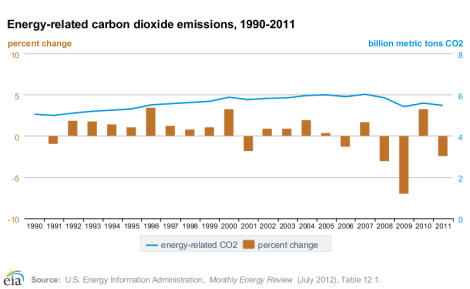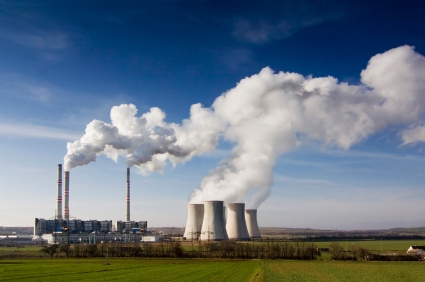
Change in carbon dioxide emissions, by year. Click to embiggen. (Image by EIA.)
The story from the Associated Press:
While conservation efforts, the lagging economy and greater use of renewable energy are factors in the CO2 decline, the drop-off is due mainly to low-priced natural gas, the agency said.
A frenzy of shale gas drilling in the Northeast’s Marcellus Shale and in Texas, Arkansas and Louisiana has caused the wholesale price of natural gas to plummet from $7 or $8 per unit to about $3 over the past four years, making it cheaper to burn than coal for a given amount of energy produced. As a result, utilities are relying more than ever on gas-fired generating plants.
Both government and industry experts said the biggest surprise is how quickly the electric industry turned away from coal. In 2005, coal was used to produce about half of all the electricity generated in the U.S. The Energy Information [Administration] said that fell to 34 percent in March, the lowest level since it began keeping records nearly 40 years ago.
Important to note: This is only emissions from electricity production, not counting things like transportation. (Here’s a somewhat-old graph of contributors to overall emissions.)
Our David Roberts assessed the reasons behind the drop a month ago. Natural gas is a large part of the picture, but by no means the entire cause. The economic decline and the increased use of renewables played an important part.
Again, the AP:
The question is whether the shift is just one bright spot in a big, gloomy picture, or a potentially larger trend.
That is absolutely one key question. Will emissions level off? Continue to drop? Then, there’s another big question. With China’s emissions spiking, will it even matter?



